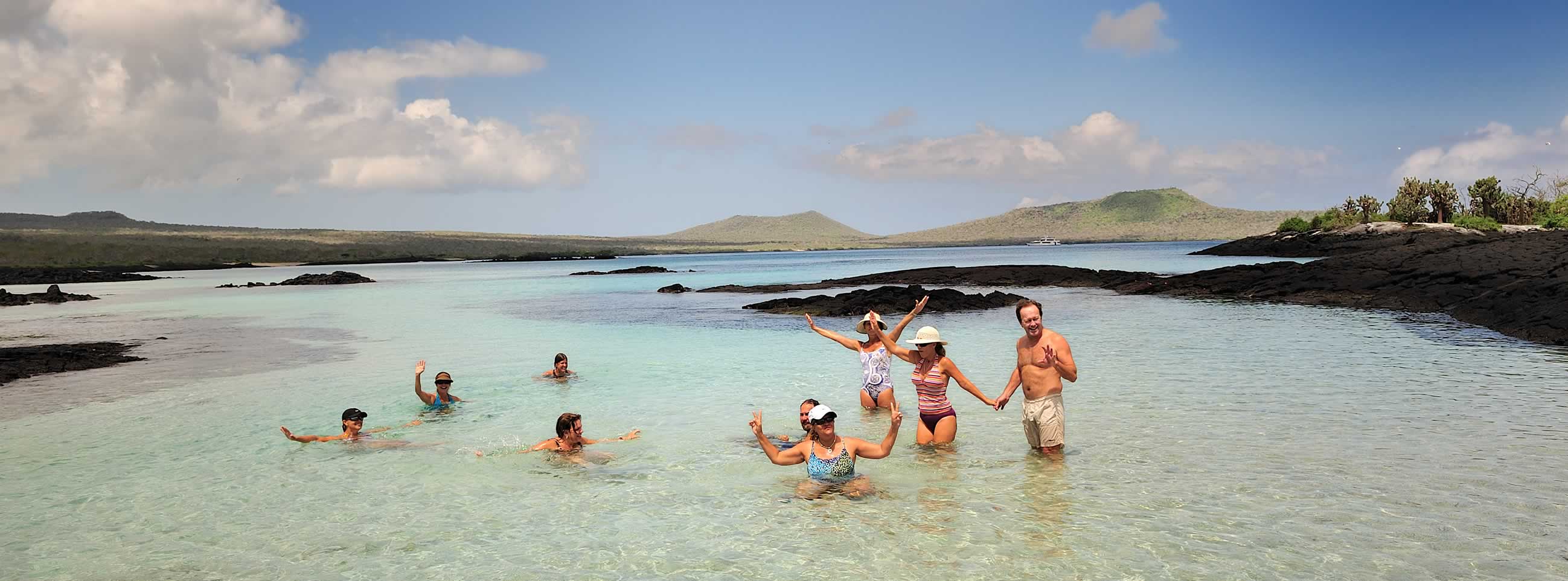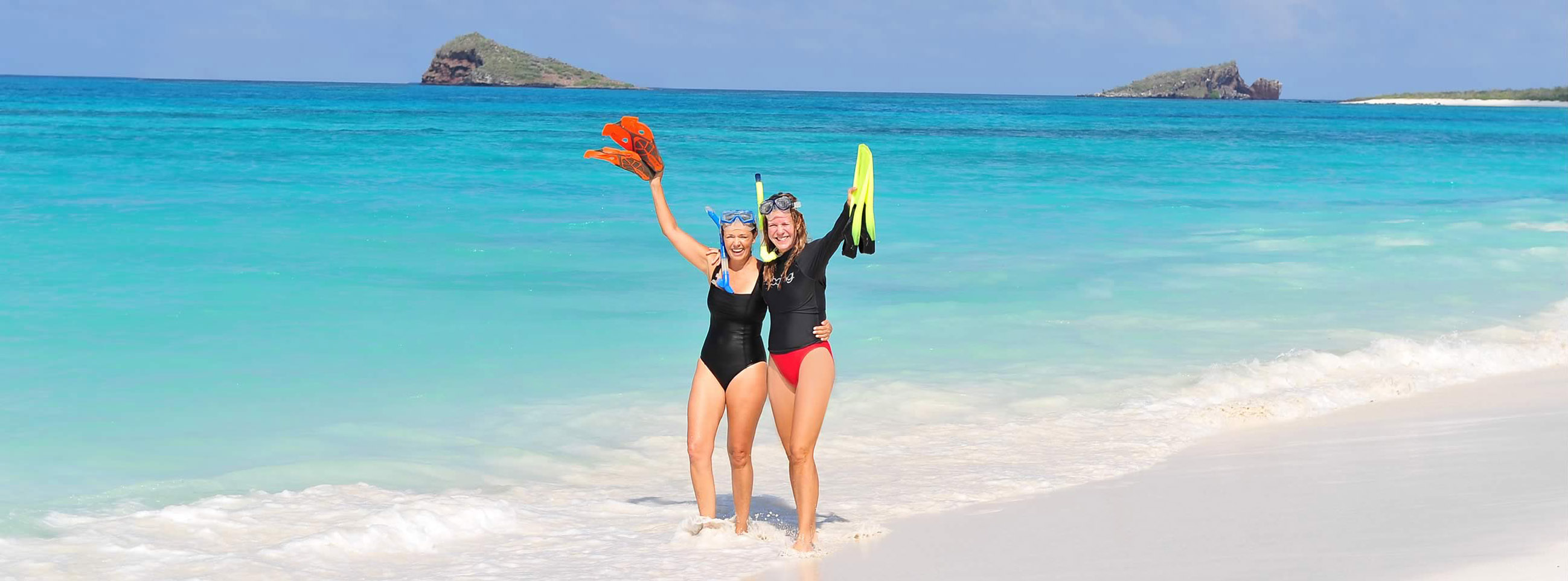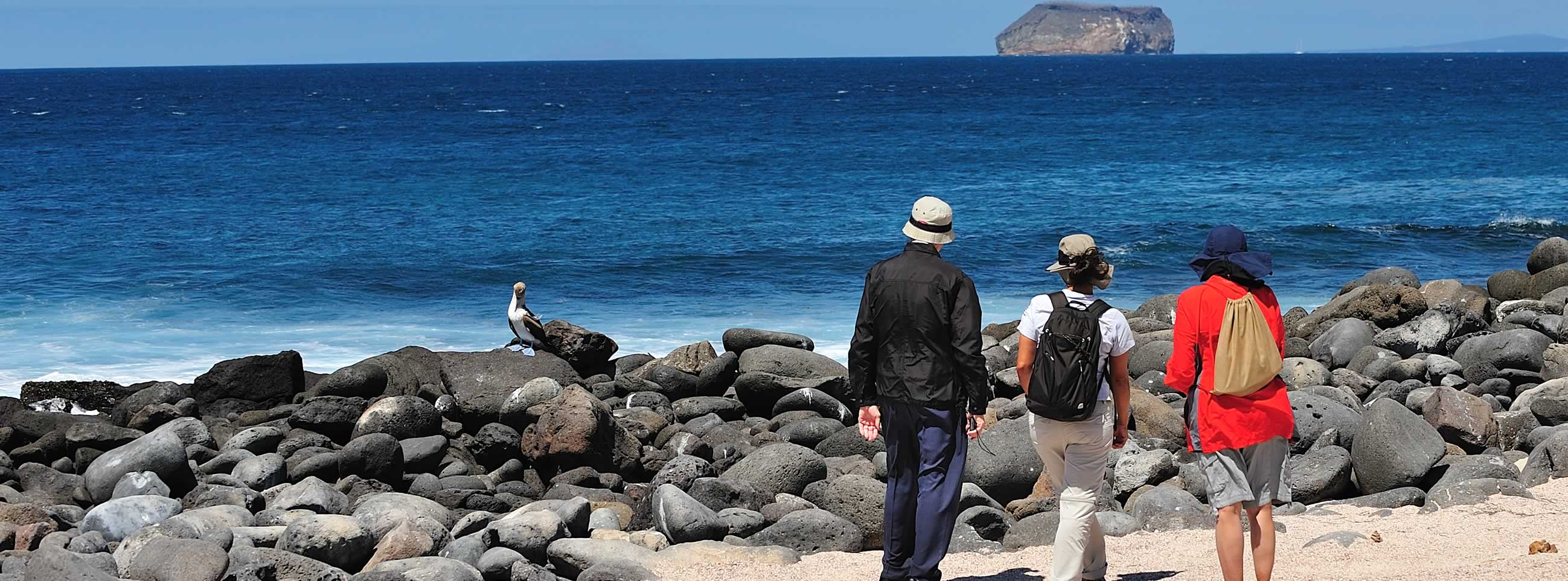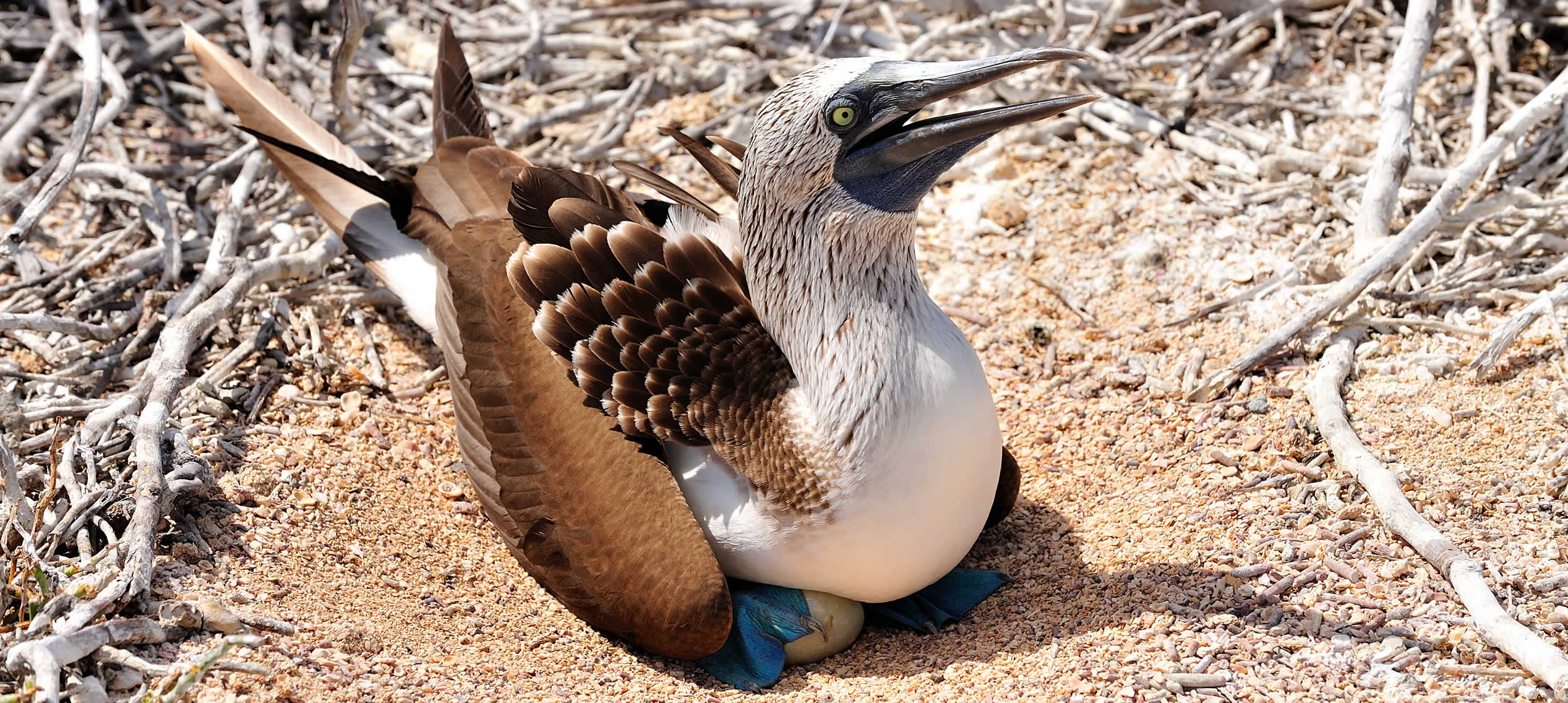How to get to Pikaia Lodge
An adventurous visit to an exotic destination like the Galapagos Islands is the trip of a lifetime. To ensure you enjoy every minute of it we have compiled our staff's best travel tips to make you better prepared – and even more excited – about your trip!
Research
Buy a guidebook or research the internet about the fascinating natural history of the Galapagos and gain a deeper insight of the islands before your arrival. We also recommend reading books or searching the web for topics related to the theory of evolution, like Charles Darwin's On the origins of species by means of natural selection, or from the controversial evolutionary biologist Richard Dawkins on evolution and genetics,
or on respectable but different beliefs of the origins of life in order to be better prepared for a deeper Galapagos experience with the lectures and nature interpretations given by our resident scientist or guides on sites. The journey from your home to our Lodge takes quite a few hours and books or e-books are good travel companions.
Book flights and confirm the bookings
There are no direct international flights to the Galapagos, but Ecuador's international airports of Guayaquil and Quito have regular daily direct flights from New York and Miami with LATAM or AMERICAN, Atlanta with DELTA (only to & from Quito), Madrid with Iberia, LATAM or Air Europa (direct to Guayaquil), Amsterdam with KLM, Panama with COPA, Santiago and Buenos Aires with LATAM, Costa Rica and Bogota with COPA or AVIANCA, Lima with LATAM or TACA. New direct flights have been added added in 2019: Paris - Quito with Air France; Toronto - Quito with Air Canada Rouge; and Dallas Fort Worth - Quito with American Airlines. We recommend our guests arrive in the tropical coastal city of Guayaquil the day before their flight to the Galapagos Islands.
Guayaquil has excellent five-star hotels and a delicious local gastronomy, with a similar climate to the Galapagos and there are no problems with altitude sickness, unlike the capital Quito (at 2800m / 9200 feet altitude). It is also more convenient to arrive in Guayaquil, avoiding a 60-90 minute drive to Quito's airport to take the early morning flight to Galapagos. The flight has to land in Guayaquil anyway en route to the islands. The airport of Guayaquil is open 365 days with good visibility all year round. Quito airport is at a high altitude in the Andes mountains and is sometimes closed because of bad visibility.
Flights to the Galapagos
All flights start early in Quito, but land first in Guayaquil to pick up new passengers after a 40-minute flight, then a 40-minute transit time before departing to Baltra's new modern eco-airport and arriving after a 1hour 40-minute flight time. In case you haven't booked your Galapagos flights with us, please keep us informed of your local flight arrangements in order to assist you on your arrival in Galapagos Baltra airport. It is highly advisable to arrive at the airports at least 1.5 hours before scheduled departure.
Pikaia Lodge is reached by flights to Galapagos Baltra Airport and not to San Cristobal's Airport. Before check-in a US$20 Galapagos Transit Card has to be paid in cash and your luggage has to be screened at the SICGAL booth to avoid the introduction of foreign living species situated close to the airline check-in counters. On arrival in Baltra airport a US$100 National Park Tax has to be paid in cash. The local airlines that fly to the Galapagos islands are: EQUAIR, AVIANCA and LATAM. All are equipped with new planes and have good services.
Recommended hotels in Guayaquil and Quito
There are some good five-star hotels in Ecuador. In Quito we recommend: Casa Gangotena, J.W.Marriot or Swisshotel. In Guayaquil: Hotel del Parque, Oro Verde, Wyndham or Hilton Colon.
Discover Ecuador's natural wonders
If you still have enough holiday time, we recommend on your return from the Galapagos to fly to the capital Quito for a few days and visit this beautiful Spanish colonial city which is a Cultural UNESCO World Heritage Site, or combine it with exploring Ecuador's stunning and varied natural wonders: the Andes highlands with its impressive avenue of active volcanoes,
colonial haciendas and Inca heritage, or visit the cloud forest near Quito or the upper Amazon rainforest with its incredible bio-diversity and ancestral indigenous tribes. Contact us and we will be glad to assist you on these exciting possibilities to crown your Galapagos experience.
Passports and visas
Foreign visitors do not require visas, and a 90-day tourist visa is issued automatically and free by immigration officers on arrival at Ecuador's international airport, with the exception of nationals from Afghanistan,
Bangladesh, Eritrea, Ethiopia, Kenya, Nepal, Nigeria, Pakistan and Somalia who do require visas prior to arrival in Ecuador. Your passport must be valid for six months after your visit and you must have a return ticket to hand.
Health
Schedule a doctor's check-up to ensure you are in good health and have all necessary health vaccinations. Do not drink tap water anywhere in Ecuador or Galapagos,
nor is it recommended to eat meals or drink juices from street food vendors or small local sea-food restaurants in order to prevent digestive problems.
Pack wisely
Days are warm and nights might get cool in the Galapagos Islands. We recommend guests pack light clothes. Don't forget to bring comfortable walking shoes (sneakers), sandals, swimsuits, a light wind breaker jacket and/or sweater for evenings or yacht navigations, waterproofs for hikes in the mountains during the rainy or misty season, high factor sun block, moisturizing cream or sun burn relief aloe vera, sunglasses and a wide-brimmed hat. We also recommend to bring your favorite DVDs, Blu-Rays for your entertainment,
since our satellite TV service is very limited due to poor satellite coverage. A small backpack is also very handy for your personals and water bottle while on excursions. Please bring only biodegradable shampoo & rinse or use our supplied biodegradable bath amenities. Pikaia Lodge offers laundry service for its guest as well. Note: all pets, fresh fruits and seeds of any kind cannot be brought to the Galapagos by travelers due to strict protocols.
Communications & Internet
All quality continental hotels in Ecuador have international direct dial telephones and internet. Ecuador has a good and extensive network of cell phone coverage in most of the country, including the Galapagos. The largest local cell phone carriers are Claro and Movistar, international corporations that are most likely compatible with your roaming packages. Please check. Pikaia Lodge has international direct dial telephones,
Starlink Satelite WiFi internet and PC for the free use of our guests at the business center for checking e-mails or local news from home. Since the bandwidths available for us in Galapagos are limited by satellite capacity (there are no fiber optics), using video conference applications, surfing the web, swipping through social media or sending/downloading files from the web might be slow depending on how many guests or office are using it simultaneously.
Photography
Expect to take far more photos than you anticipated in this visually stunning destination. Bring camera chargers and plenty of memory, and if possible binoculars for closer wildlife and landscape observation.
Money
Ecuador's national currency is the US Dollar. We advise you to bring a combination of cash in US dollars plus credit cards. Note: it is illegal to bring more than US$ 10,000 in cash if not declared in customs. Note that credit cards should not be relied upon as a main source of funds because there are many places
where cards cannot be used, especially for local transport expenses and cash advances. American Express, VISA, MasterCard and Diners Club are widely accepted in most good quality restaurants and shops. There are some limited cash dispensing machines in Galapagos.

When is the best time to come to the Galapagos?
The Galapagos are a year-round destination
But there are two distinctive climatic seasons in the Galapagos:
The hot tropical rainy season
Islands climate: The hot tropical rainy season starts in December with the annual arrival of the warm "El niño" current, coming from the north, and ends mid-June. There is a lot of convection with impressive and majestic "Cumulonimbus" clouds formations. Therefore it rains mainly at night and in late afternoon in short intense bursts, followed by clear skies. Air temperatures can climb up to a hot 36-40º Celsius (104ºF) during day time and water temperatures are warm at an average 23-27º Celsius (73-80+ºF). This season of the year is the warmest and most suitable for sunbathing, snorkeling and swimming at the spectacular Galapagos white sandy beaches and secluded crystal clear lagoons. The land visits are also great with lots of wildlife, but the intense equatorial sunshine, humidity and reflected heat from the lava stone
surroundings might be uncomfortable, especially for some senior travelers doing our land exploration programs. The seas are calm with hardly any wind blowing, which are perfect yacht navigation conditions. The giant tortoises in the wild are rarely seen during this season, since they migrate from their habitat in the misty highlands down to the arid and inaccessible lowlands for mating. At this season of the year Pikaia Lodge's special micro-climate conditions are typically tropical. Since we are located at 450m altitude it is mostly sunny with fresh breezes avoiding the intense lowland heat and humidity levels. Some guests might feel the need for air conditioning for sleeping at night in spite of having insulated roofs, walls, ceiling ventilators and natural cross air ventilation.
Conclusion
If you are more interested in sunbathing, swimming and snorkeling at the beaches and lagoons, this is surely the best season to come. The perfect escape from the cold winters and springs at home!

The cooler sub-tropical "garua" dry season
Islands climate: The sub-tropical dry season starts with the annual arrival of the cool oceanic Humboldt current, coming from the south in July, and ends in November. There is little convection and "stratocumulus" cloud formations are predominant and it does not rain in the sunny, arid lowlands. In the southern slopes of the highlands in the bigger islands, the moisture accumulates, brought with the southern winds and a fine mist with drizzly rain surrounds the volcanic mountains and hides the islands, making them disappear magically from sight. This is the reason why Galapagos are called "The enchanted islands". But, curiously the northern slopes and the smaller lower islands almost always remain sunny and dry. This is where our guests will enjoy most of our exciting day explorations programs. Air temperatures are now cooler at a very comfortable 20-24º Celsius (68-75º F) during the day and 17-20º Celsius (64-70º F) at night. Humidity levels drop significantly in the lowlands where most of our explorations take place. Water becomes cooler at an average 18-20º Celsius (65-70º F) and wet suits (shorty) are then provided to our guests onboard our yachts for a more comfortable snorkeling experience. This time of the year is ideal for our physically active land excursions, walking, hiking, kayaking, cycling and jogging - since temperatures are cooler, thus preventing sunstroke or related discomforts. The land and marine visits (especially snorkeling) remain spectacular and full of wildlife.
The seas are now a bit choppy with cool sea breezes. Knowing this, Pikaia Lodge yacht explorations are cleverly designed to minimize discomforts by focusing our activities on the northern side of the islands which are mostly sunny and shaded from the winds, avoiding seasickness and overcast skies. This season is the best to snorkel with the Galapagos Penguins and to see the rare giant tortoises in the wild in great numbers, since they migrate up to the misty cloud forest of the highlands of Santa Cruz island and at Pikaia Lodge's private tortoise reserve. Santa Cruz island is the best island in Galapagos to see them within easy access. At this time of the year Pikaia Lodge's micro-climactic conditions are a bit different and cooler, with a more mystical and peaceful feel, like a real mountain lodge. In spite of being located at the sunniest side in the highlands, our property is surrounded occasionally by drizzle rain and mist, called locally "garua", especially early mornings and at nights. At those times, our guests will experience the rare contrast of plenty of sunshine with cooler and more pleasant air temperatures during our exciting land explorations, then enjoy fine dinners with the cozy heat of fireplaces, surrounded by the magical mist of the enchanted Galapagos highlands, rounded off by a comforting sleep with cool natural ventilation. The perfect chill-out!
Conclusion
If you are more interested in land-related activities, seeing wild giant tortoises in their magical and misty habitat, or to avoiding heat-related discomforts, this is surely the season to come. A refreshing escape from the hot summers at home!

